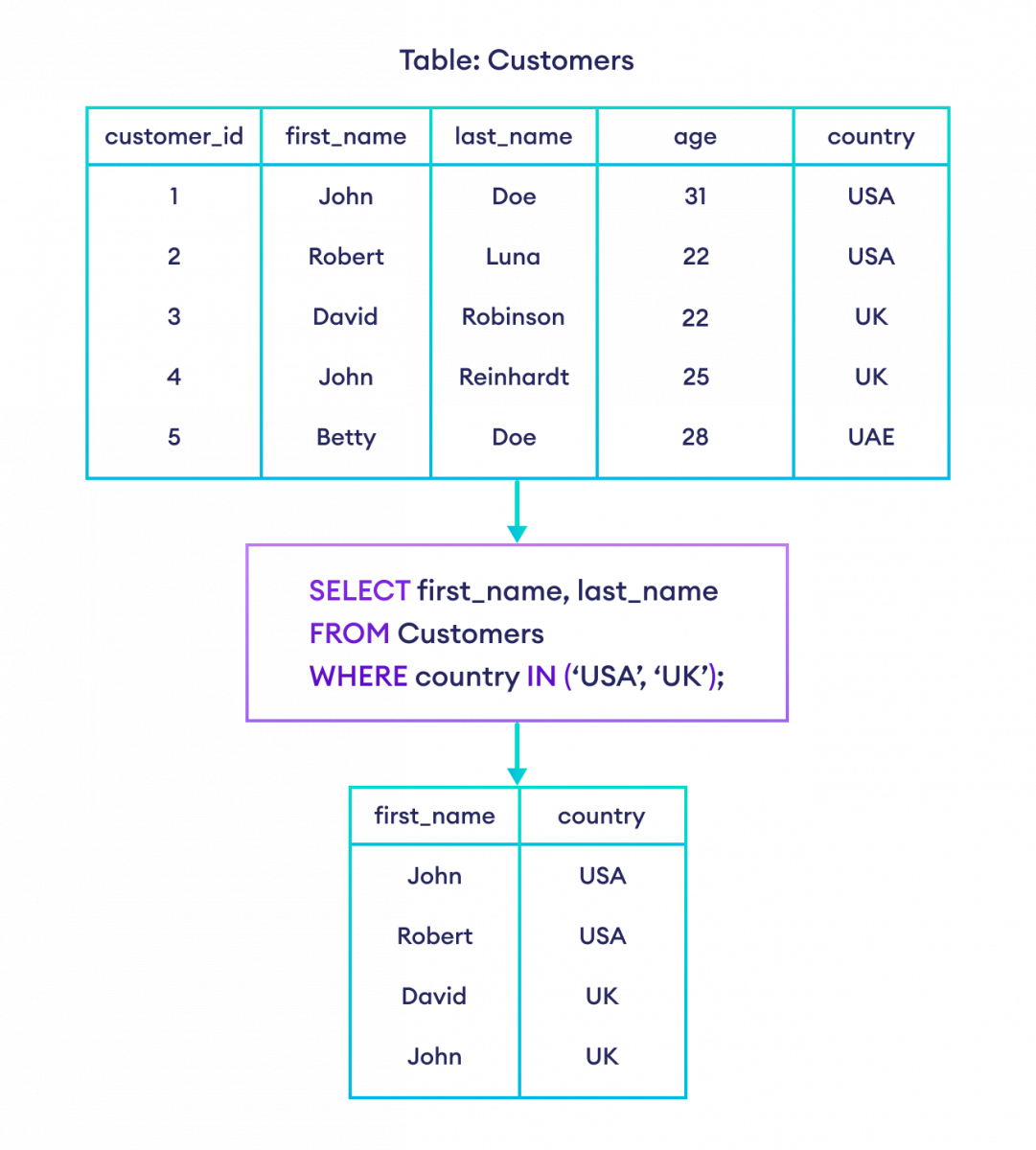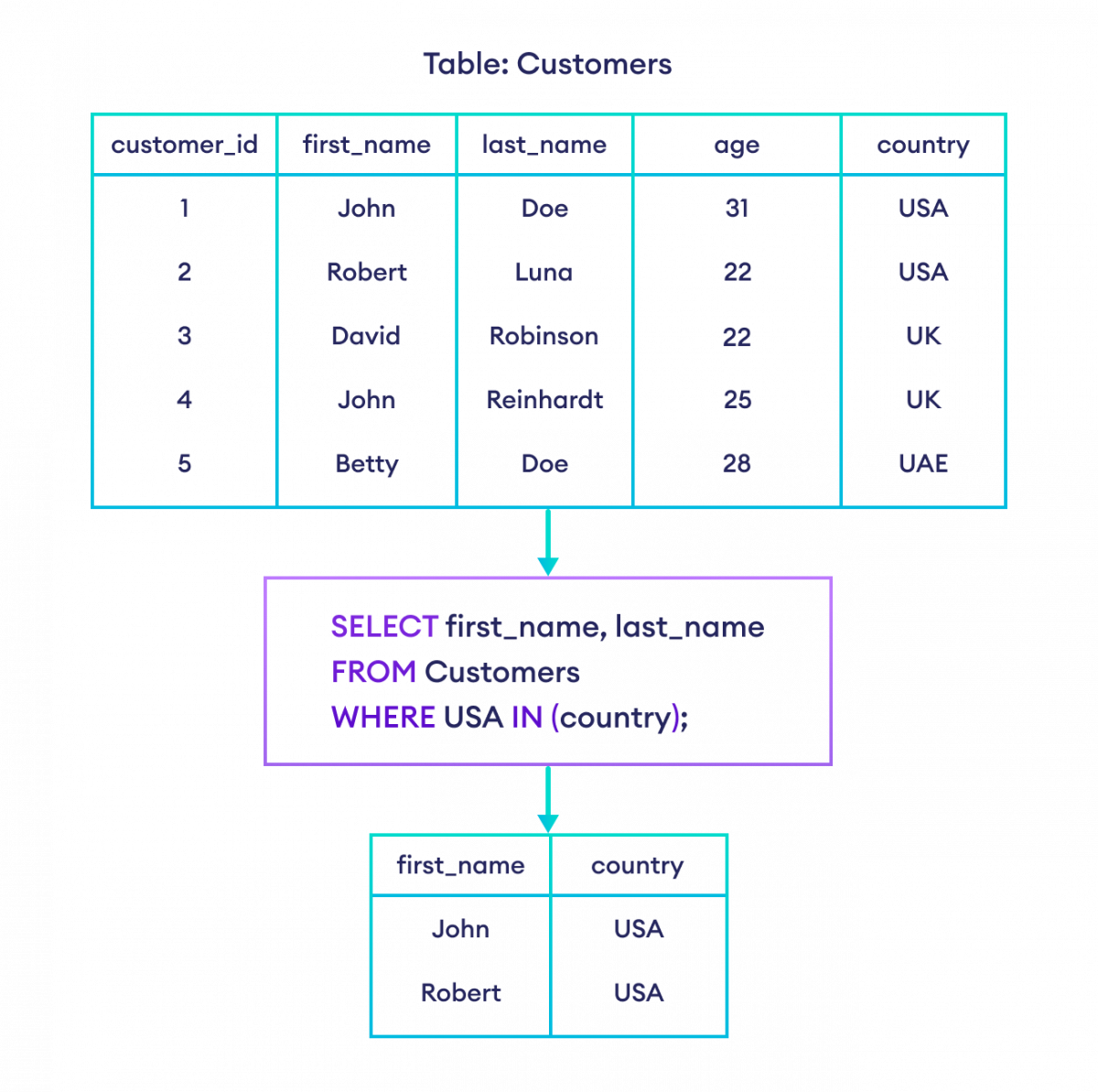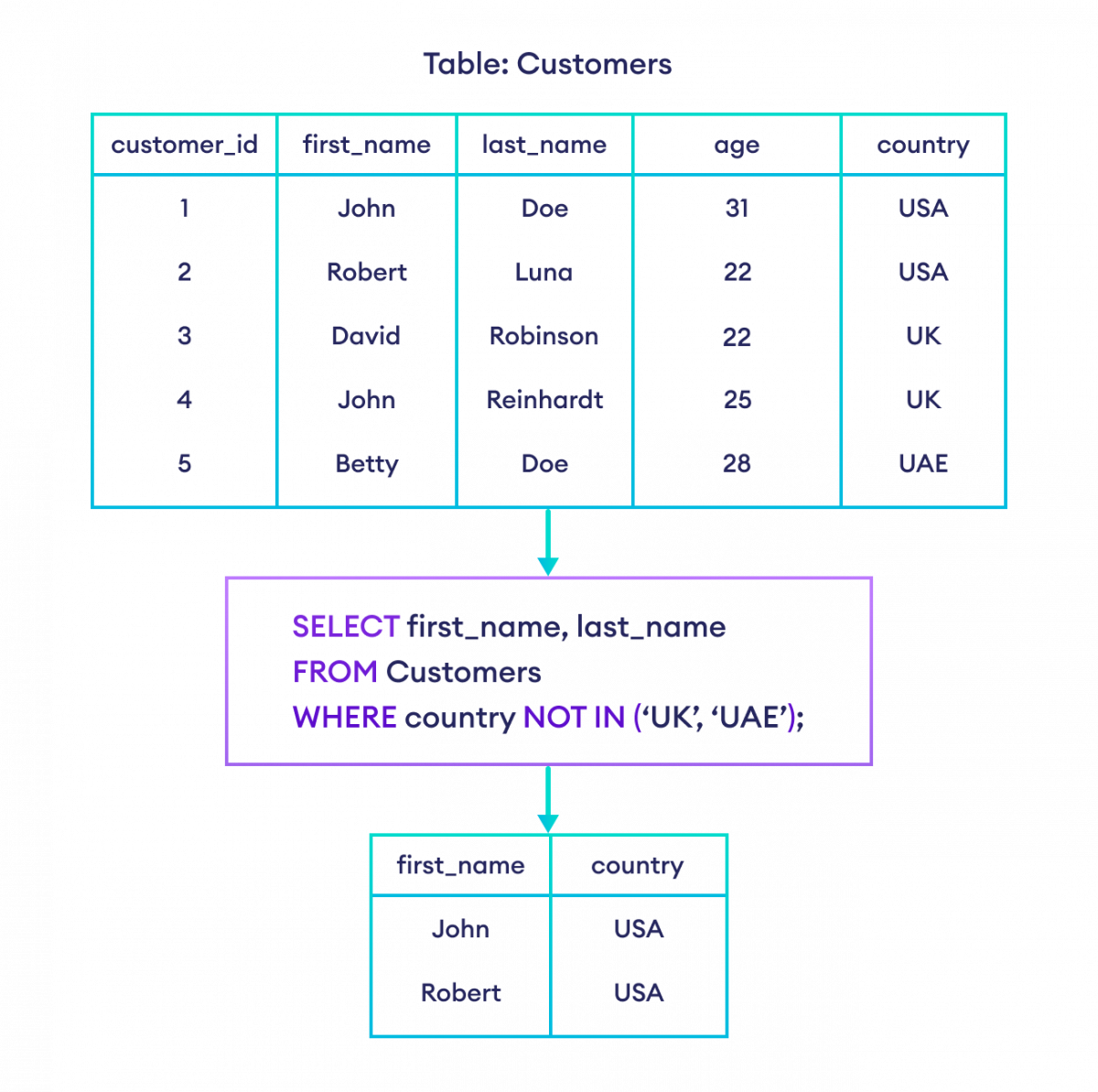我们使用 IN **运算符**与 WHERE 子句一起在列表中匹配值。
示例
-- select customers from the USA
SELECT first_name, country
FROM Customers
WHERE country IN ('USA');这里,SQL 命令从 Customers 表中选择 country 值为 'USA' 的行。
SQL IN 语法
SELECT column1, column2, ...
FROM table
WHERE column IN (value1, value2, ...);这里,
column1, column2, ...是表列。table是我们从中选择数据的表名。column是值进行比较的列。IN运算符指定column值应与之比较的值。value1, value2, ...是column值与之比较的值。
示例:SQL IN
-- select rows if the country is either USA or UK
SELECT first_name, country
FROM Customers
WHERE country IN ('USA', 'UK');这里,SQL 命令在 country 是 **USA** 或 **UK** 时选择行。

示例:IN 运算符根据国家/地区值选择行
IN 运算符可用于选择特定值存在于指定字段中的行。
-- select rows with value 'USA' in the country column
SELECT first_name, country
FROM Customers
WHERE 'USA' IN (country);这里,SQL 命令在 country 字段中存在 USA 值时选择行。

SQL NOT IN 运算符
NOT IN 运算符排除列表中匹配值的行。它返回除了被排除的行之外的所有行。
-- select rows where country is not in UK or UAE
SELECT first_name, country
FROM Customers
WHERE country NOT IN ('UK', 'UAE');这里,SQL 命令在 country 列中不存在 **UK** 或 **UAE** 时选择行。

注意: NOT 运算符反转了 IN 运算符的工作方式。它们基本上是两个组合的运算符。要了解更多信息,请访问 SQL AND、OR 和 NOT 运算符。
更多关于 SQL IN
带重复值的 SQL IN 运算符
IN 运算符忽略列表中的重复值。例如,
-- IN ignores the duplicate 'USA' value
SELECT first_name, country
FROM Customers
WHERE country IN ('USA', 'UK', 'USA');上面的代码等同于下面的代码。
-- select customers that live in either the USA or the UK
SELECT first_name, country
FROM Customers
WHERE country IN ('USA', 'UK');带子查询的 SQL IN 运算符
假设我们只想获取那些已下订单的客户的详细信息。
以下是使用子查询实现此目的的方法。
-- select only those customers who have placed an order
-- the subquery is enclosed within parentheses after the IN keyword
SELECT customer_id, first_name
FROM Customers
WHERE customer_id IN (
SELECT customer_id
FROM Orders
);这里,SQL 命令
- 使用子查询从 Orders 表中选择 customer_id,
- 从 Customers 表中选择 customer_id 存在于子查询结果集中的行,即如果 customer_id 也存在于 Orders 表中。
要了解更多信息,请访问 SQL 子查询。
另请阅读